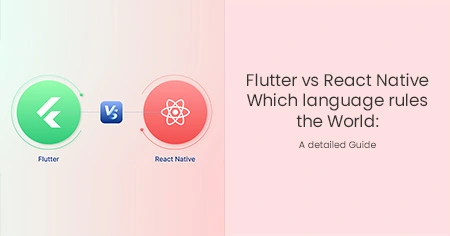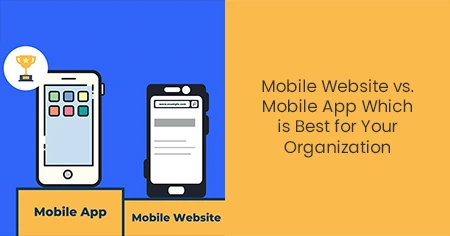They provide a unified environment for developing applications for multiple platforms, eliminating the need for platform-specific tools or languages. Popular examples include React Native, Xamarin, Ionic and Flutter. According to Persistence Market Research, the cross-platform app development framework market will be worth $546.7 billion by 2033. Flutter can expect a lucrative market, and React Native's popularity will remain high.
Businesses strive to deliver exceptional user experiences across platforms, so choosing a suitable App Development NYC framework is crucial. Fortunately, the number of viable options is limited: Flutter and React Native have emerged as the two dominant players, each accounting for an impressive 42% of the market, according to a Statista study.
This blog will examine the Flutter vs. React Native debate to help you decide which is better for your project.
What is Flutter?
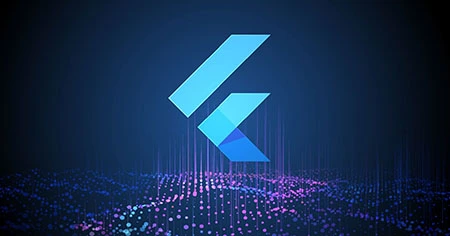
Pros of Flutter:
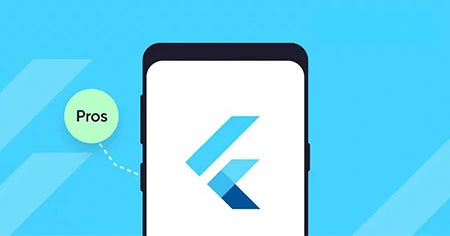
Single codebase for multiple platforms: Flutter allows you to write code once and deploy it across various platforms, including iOS, Android, web, and desktop, reducing development time and effort.
Strong Community and Ecosystem: Flutter has a growing and active developer community that contributes packages, libraries, and plugins to expand its functionality. This makes it easier to solve common development issues.
Adaptable UI: Flutter's flexible widget system makes it simple to create adaptive and responsive user interfaces that look great on various screen sizes and orientations.
Rich Set of Widgets: Flutter provides a customizable widget for creating complex and visually appealing user interfaces. These widgets adhere to Material Design and Cupertino guidelines for consistent and platform-specific UIs.
Dart Language: Dart, the programming language used in Flutter, is known for its quick execution and strong typing. Dart is relatively easy to learn for developers familiar with JavaScript or Java.
Dart Language:
Large App Size: Due to the inclusion of Flutter's framework, Flutter apps can be larger than native apps. This may be an issue for users with limited storage.
Limited Native Modules: While Flutter has a robust plugin ecosystem, it may not include every possible native module. Some functionalities may require you to write platform-specific code (Swift/Objective-C for iOS, Java/Kotlin for Android).
Learning Curve: Developers new to Flutter may face a learning curve, particularly in the programming language Dart. However, for experienced developers, this curve is usually short-lived.
Accessibility: While Flutter has improved accessibility, full compliance with accessibility guidelines may necessitate additional work.
Apps Built with Flutter:
- Groupon
- Google Ads
- Hamilton Musical
- My Leaf
- Alibaba
- Topline
- Reflect
What is React Native?
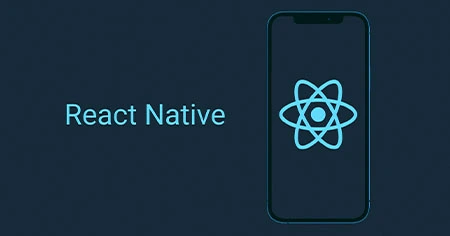
React Native is an open-source mobile application framework created by Facebook. It enables developers to build cross-platform mobile apps with JavaScript and React, a popular JavaScript library for user interfaces. React Native was first introduced in 2015 and has grown in popularity.
Pros of React Native:
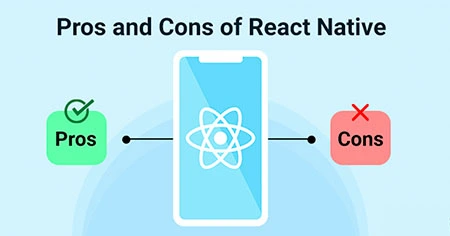
Cross-Platform Development: One of the most significant benefits of React Native is the ability to write code once and run it on both the iOS and Android platforms. This significantly cuts development time and effort.
Large and Active Community: React Native has a thriving developer community and a diverse set of third-party libraries, modules, and tools. These enable App Development NYC company to solve common problems more efficiently.
Cost-Effective: Building with React Native can be more cost-effective because it eliminates the need for separate iOS and Android development teams. A large part of the codebase can be shared. .
Hot Reloading: Hot Reloading allows developers to see the immediate impact of code changes in the app. This feature accelerates development and streamlines debugging.
Cons of React Native:
Learning Curve: Developers familiar with JavaScript and React may find React Native easier to learn. However, mastering mobile development concepts, debugging, and working with platform-specific code can be difficult.
Larger App Size: React Native apps can be larger than native apps due to the need for a JavaScript runtime and core modules. This could affect the download and installation times.
Limited Access to Native Features: While React Native gives you access to many native modules, specific niche or cutting-edge native features may be unavailable or require custom native code development.
Dependency on Facebook: Facebook maintains the open-source project React Native. Some developers are concerned about the framework's long-term sustainability and direction if Facebook's priorities change.
Third-Party Modules: Third-party modules can be of varying quality and reliability. To avoid potential issues, community-contributed packages must be carefully chosen and used.
Apps Built with React Native
- Skype
- Walmart
- Airbnb
- Salesforce
- Tesla
Flutter vs React Native: Which Language Rules the World?
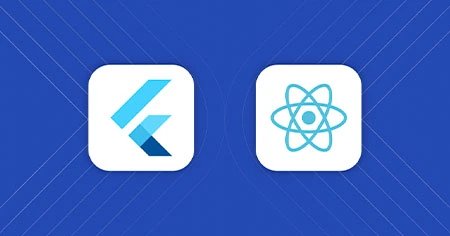
| Flutter | React Native | |
|---|---|---|
| Popularity growth | High | Moderate |
| Learning Curve | Steep | Moderate |
| Programming language | Dart | JavaScript, Typescript |
| Developed by | Meta | |
| Documentation | Rich | Rich |
| Hot Reload | Yes | Yes |
| Supported platforms | Windows, IOS, Android, Linux, web and macOS | Windows, IOS, macOS, Android |
| Top apps | Top apps Alibaba, Google Ads, eBay | Netflix, Instagram, Viber |
| Time to market | Faster than React Native | Fast, compared to native app development |
| Documentation | Rich | Rich |
| Cost | Free and open-source | Free and open-source |
| Developer availability | Middle | Higher |
| Testing and debugging tools | Inbuilt debugging tool | Developers need to use third-party debugging tool |
| Native or existing code integration | Yes | Yes |
Conclusion
Both Flutter and React Native are excellent choices for cross-platform app development. Your decision should be based on your project's specific needs and your team's familiarity with the framework. Regardless of your preference, these frameworks have transformed mobile app development, making it faster and easier.




